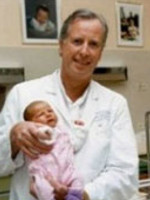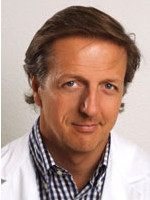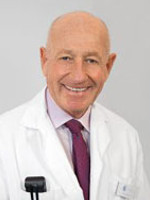Infertility is an inability to conceive a baby, in other words incapability to propagate naturally. The problem of male infertility is often considered taboo because many representatives of the stronger sex quite painfully take even a possibility of such a disease. Adequately diagnosed and timely treated infertility is a basic premise for a successful solution of this problem in 80% of all cases.
Male fertility depends on the quality characteristics of sperm. If the percentage of viable spermatozoa in the ejaculate is low or if the spermatozoa have some morphological pathologies the chances of impregnation are drastically reduced. According to the statistics every 10th man is confronted with this problem.
What provokes male infertility? Types of infertility
Many different diseases can lead to disruptions of spermatogenesis: varicose veins of the spermatic cords, inguinal hernia, congenital genetic defects, diabetes, disruption of the thyroid and adrenal glands.
According to the WHO (World Health Organization) classification, there are several main types of infertility:
- Aspermatogenic sterility: caused by a spermatogenesis disorder, i.e. formation of spermatozoa
- Obstructive infertility: arises because of the obstruction of the spermatic ducts
- Autoimmune infertility: antibody response to sperm (this pathology can occur in both men and women)
- Genetically determined infertility
Only a specialist can determine the cause of infertility in the course of a comprehensive examination of the man.
What tests are used in Germany to diagnose male infertility?
Diagnostics of male infertility is a a fine process that includes clinical, laboratory and molecular biological tests, ultrasound screenings, genetic researches and so on.
German centers of reproduction and clinical embryology are usually multidisciplinary, which means they are medical institutions where different specialists cooperate: andrologists, endocrinologists, geneticists, reproductologists, bacteriologists, and others.
The following types of examinations are performed in case of a suspected infertility:
- Urogenital examination
- Exclusion of infections
- Spermatogenesis analysis
- Hormonal profile evaluation
- Ultrasound examination
Let us cover some of them in more details.
Diagnostics of male infertility involves, above all, urogenital examination. If congenital or acquired physiological pathologies are present, it is advisable to conduct a small surgical intervention to eliminate the problem.
Infectious screening test includes bacteriological examination of the urethra smear, prostate secretion. A chronic infection seldom takes its toll, but it negatively affects the man's fertility.
Spermatogenesis analysis (spermogram) is usually performed twice with an interval of 2-3 weeks. In Germany, the examination of the morphological and physiological properties of spermatic fluid is carried out at the highest technological level which allows to exclude errors. Modern medical practice in Germany has clear criteria for judging the quality of sperm. First of all, the acid-base balance, concentration and motility, as well as the morphological characteristics of spermatozoa, are established. A particularly important step in assessing the spermatogenesis is the presence of sperm antibodies that provoke immunological infertility.
If the results of spermogram are unsatisfactory one prescribes a full hormonal examination.
The examination also includes an ultrasound screening and a scrotum tomography and some innovative techniques of optical laser diagnostics. In some cases the patients should have a testicular biopsy performed. It is usually performed in patients with oligospermia and azoospermia. During the biopsy an aspiration of testicular sperm is carried out according to TESA or MESA methods which allows one to obtain the sperm of high quality even in case of unsatisfactory spermogram results.
Causes male fertility problems
In about half of all unintentionally childless couples, the cause of the fertility problem lies alone or in part with the man. This is often only discovered by examining a semen sample in the laboratory.
Disorders of sperm cell formation
The most common male fertility disorder is that not enough intact and well motile sperm are produced. As a guideline, a total of at least 39 million sperm in the semen (ejaculate) (or 15 million per milliliter), of which at least four percent should be normal in shape and at least 32 percent should be well motile.
The cause of the disorder can be an earlier or current testicular level (inguinal or sliding testicles etc.). The testicles are not completely or not permanently in the scrotum, as is necessary for undisturbed sperm production. The presumably genetic causes of undescended testicles have not yet been clearly clarified. The malfunction permanently damages the testicles because they are too warm and may also have poor blood circulation. As a result, they produce too few sperm.
Direct damage to the testicular tissue can also have a lasting impact on sperm production: This can lead to previous or acute infections of the testicles or epididymis (orchitis / epididymitis), which also includes mumps orchitis in childhood. Testicular injuries such as sports or testicular torsion (testicular torsion) can also cause damage. Last but not least, varicoceles (thickened veins mostly in the left half of the scrotum) are suspected of disrupting sperm production.
Testicular tumors are rare overall, but are among the most common male cancers between the ages of 20 and 40. Testicular tumors also occur significantly more frequently among men with a diagnosed fertility disorder. The fertility disorder is therefore also seen as a risk factor for a tumor disease of the testicles.
Smoking has been shown to have a harmful effect - both on the production and on the fertility of sperm. Because of increased DNA damage to sperm, smokers also have less chance of successful artificial insemination.
Disorders of sperm transport
Sufficient sperm are formed in some men. However, due to a sperm transport disorder - the seminal passages are partially or completely closed or not completely in place - they cannot mix with the sperm fluid. In these cases, too few or no intact sperm are found in the ejaculate (obstructive azoospermia).
The cause is often a disturbance of the epididymal function, scarring of the vas deferens - for example, by operation of a hernia or intentionally through sterilization (vasectomy) - or in a congenital malformation. Even unnoticed infections (e.g. from chlamydia) can lead to occlusion of the seminal ducts.
In many cases, occluded semen passages can be opened microsurgically, so that they can be reproduced naturally. If the semen passages cannot be made passable, there is the possibility of testicular sperm extraction (TESE) or microsurgical epididymal sperm aspiration (MESA). Sperm are removed from the testicles or epididymis, frozen and later processed for artificial insemination.
Insufficient bladder obstruction
In some men, the muscular occlusion between the bladder and prostate does not work properly, causing what is known as retrograde (backward) ejaculation. During an orgasm, the semen is not transported outside through the penis, but is released into the bladder and later excreted in the urine.
Possible causes of inadequate urinary bladder closure are operations on an enlarged prostate, diabetes mellitus or nerve damage. If the retrograde ejaculation itself cannot be treated, the sperm can be filtered out of the urine using special procedures.
Antibody formation
In immunological sterility, the man's immune system treats its own sperm cells as foreign bodies. The result is a defense reaction against your own body cells (autoimmune reaction). The immune system attacks the sperm cells by forming antibodies (antibodies) against them in the blood. These antibodies attach themselves to the sperm and can therefore impair their mobility as well as their ability to reach the egg and penetrate its shell.
How does one cure male infertility?
There is an abundance of articles dedicated to the treatment of female infertility. We, on the other hand, will talk about types and methods of treating male infertility Male infertility can be treated either conservatively, or surgically. Quite often the patient should receive the combination of both surgical and pharmacological methods.
Treatment of infertility developed as the result of spermatic duct obstruction can, in most cases, be performed only by means of surgical correction. In this case it is important to determine whether the sperm cells in testicles get mature. If spermatogenesis process is not disturbed and the problem lies only in the obstruction of sperm ducts a minimally invasive (laparoscopic) intervention under local anesthesia is assigned. This is a quick low traumatic and effective surgery allows one to eliminate the obstructive infertility.
Is it possible to cure the male infertility in varicocele?
It is a question that worries many patients. The answer is simple: If the precious time is not lost, the fertility in men diagnosed with varicocele can be restored surgically. The treatment with hormone preparations is prescribed which activates the sperm production. As a rule, when varicocele is eliminated the normal spermatogenesis is restored within a year in 95% of all cases, the sperm quality is greatly improved.
Varicocele is the varicose vein-like dilation / meandering of the testicular veins in the spermatic cord.
The varicocele is the most common testicular disease and is found in 10-20% of all men.
Due to the different drainage ratios of the two testicles (the testicular vein of the left testicle opens at a right angle into the left renal vein, the testicular vein of the right testicle, on the other hand, at an acute angle into the inferior vena cava), the varicocele is only in the left one in the clinical examination in 80 - 90% Side, in 5 - 10% on the right or on both sides.
This page distribution given in most publications on varicocele contradicts a work published in the Lancet. According to this, of 255 infertile patients with varicocele in Doppler sonography and venography, 17.6% showed a one-sided left-sided, 1.5% one-sided right-sided and 80.8% a bilateral varicocele. According to the experts, 10% of the left and 90% of the right cases would have remained undetected in the purely physical examination. It was only through the use of Doppler sonography and venography that it was possible to prove that the varicocele is usually a bilateral disease.
Severity levels of the varicocele
A distinction is generally made between three degrees of severity of the varicocele (I-III), with a pronounced varicocele (III) usually being accompanied by a reduction in the size of the testes (testicular atrophy). A varicocele is palpated / seen best while standing with simultaneous actuation of the abdominal press (so-called Valsalva maneuver), in which case the testicular veins between the scrotum, which are dilated to varicose veins, feel like a worm-shaped ball. One speaks of a subclinical varicocele if one cannot clinically palpate varicose veins in the scrotum, but one can detect a back flow into the testicular veins with the help of the Doppler / duplex sonography using the abdominal press (Valsalva maneuver).
The scientific literature on varicocele already fills entire libraries and to this day, scientists are still debating whether the treatment of a clinically manifest varicocele or a so-called subclinical varicocele in the case of infertility (infertility) is capable of improving fertility and to lead to the desired pregnancy.
Even a recent literature search on the topic of varicocele - the so-called Cochrane Review was unable to answer the question positively or negatively in this regard. She referred to ongoing prospective studies, but at the same time emphasized that what the literature currently provides on the subject of varicocele cannot be used to reject therapy of varicocele in men with reduced fertility (infertility) as useless.
Overall, there is much in the literature to suggest that the more pronounced a varicocele, the higher the likelihood of impairment of fertility (infertility), meaning that subclinical varicoceles tend not to lead to clinically relevant impairments of fertility.
In general, most authors / doctors share the view that men who wish to have a child with proven impairment of fertility (infertility) in the spermiogram and that apart from a varicocele no other competing causes of infertility are found should be treated for the varicocele.
Various smaller studies in patients with azoospermia (no sperm in the sperm / ejaculate detectable) have shown that successful treatment of the varicocele can lead to sperm production and subsequently to pregnancy.
In the case of the child's varicocele, most authors agree that it should be surgically removed if it is pronounced and has already caused the testicle to become smaller (testicular atrophy).
For the treatment of the varicocele, various surgical and sclerotherapy procedures have proven to be equivalent in terms of the success of treatment (possible improvement of the spermiogram and the onset of pregnancy) .The following methods currently compete with each other in the treatment of a varicocele and ultimately it depends on the experience of the respective surgeon which method he carries out:
Surgical procedures for eliminating a varicocele are usually performed from a groin incision, whereby either all spermatic cord vessels (Palomo operation) or only the testicular veins (Bernardi operation). severed and prevented. In some clinics, the operation of the varicocele is also carried out microsurgically or laparoscopically (so-called minimally invasive surgical procedures).
Sclerotherapy for varicocele
A distinction is made between retrograde sclerotherapy and antegrade sclerotherapy for varicocele. In retrograde sclerotherapy, the leg vein is punctured at the groin level and from there a thin catheter is pushed over the left renal vein into the left testicular vein and then the sclerotherapy agent is injected. With antegrade sclerotherapy, a 2 cm incision on the scrotum exposes a testicular vein under local anesthesia, punctures it and then injects the sclerotherapy agent. Because of its relatively simple feasibility and its universal applicability, antegrade sclerotherapy has become the most frequently used method in the treatment of varicocele in Germany.
Approximately A spermiogram should be performed 6-9 months after treatment of the varicocele, whether surgical or sclerotherapy, to check whether there has been an improvement in fertility. In about 5-10% of all cases there is persistence or relapse of the varicocele, i.e. that there are still varicose veins in the scrotum. In this case, surgery or sclerotherapy is required.
Treatment of male immune infertility
A question often asked is whether the type of infertility such as immune infertility can be cured. This type of infertility is caused by the influence if antibodies on the sperm. The antibodies can block spermatogenesis eliminating the possibility of conception.
The treatment of immune male infertility begins with the elimination of all factors that can trigger the production of antibodies. The systematic hormonal therapy and enzymotherapy are a part of the treatment.
Sperm washing
Specialists in reproductive centers of Germany can perform sperm washing. It is a procedure that separates movable and high quality sperm from seminal fluid and unviable cells. In Germany this process is done using a special centrifuge that „sorts“ best sperm for the further intrauterine insemination.
Regardless of the infertility type German specialists look at the problem in a complex, based on the patient's clinical record and individual situation.
Infertility problem. What should one begin with?
If you are confronted with the infertility problem you should not postpone a doctor's appointment. Regardless of the infertility type German specialists look at the problem in a complex, based on the patient's clinical record and individual situation.
We will help you choose the right andrology and reproductive medicine clinic in Germany and solve all the issues regarding the organization of diagnosis and treatment of infertility in Germany. We are waiting for your call. Hot line phone number: +49(7221) 39-65-785
What do the results of spermogram say?
Special attention is paid to the therapy of male infertility in Germany. Before the treatment an urogenital examination and spermiogram analysis are carried out. The results of sperm analysis allow to judge the reproductive abilities of a man at the moment of delivery of the test. The infertility is diagnosed if the results of two or more tests (performed with an interval of 2-3 weeks) indicate one or another pathology that hinders the conception.
A normal spermiogram (normozoospermia) according to WHO (World Health Authority) is used if the following parameters are available: See table "New reference values for the spermiogram according to WHO 2010".
Medical nomenclature for categorizing the spermiogram:
- Normozoospermia: normal
- Ejaculate parameters for oligozoospermia: too few sperm (<15 million / ml)
- Asthenozoospermia: decreased motility (<32%)
- Teratozoospermia: Too few normally shaped sperm
- Oligo-Astheno-Teratozoospermia: Too few sperm, too little
- (OAT): Motility and too little normal shape
- Cryptozoospermia: Less than 1 million sperm / ml
- Necrozoospermia: only dead, i.e. non-motile sperm
- Parvesemia: ejaculate volume too low (<1.5 ml)
- Azoospermia: No sperm in the ejaculate
- Aspermia: No ejaculate / sperm
- Fertility of the man
With age, there are age-related changes in the various structures of the testicular tissue in men and, above all, a decrease in the number of Leydig cells producing the male sex hormone testosterone, so that from the 40th to the 50th 20% of men suffer from a testosterone deficiency (hypogonadism), but spermiogenesis itself remains largely unaffected by the aging process of the man.
This means that a decrease in sperm cell parameters and function has so far not been proven for the aging man, so that the probability of pregnancy in couples with older men and young women is similar to that in couples with young men. However, in older men around the age of 50 there is an increase in structural chromosomal changes in the sperm cells and thus a higher risk that children of older men will develop an autosomal dominant disease.
Conservative treatment of male infertility
If the infertility reason is established one should primarily eliminate the factors that cause this problem. For example, if there are abnormalities in patient's hormonal profile German specialists prescribe most advanced substitution hormone preparations that have no side effects. In case of prostate gland inflammation or raised infectious markers the doctors cure the pathology itself. If there are problems with immune antibodies the specialist should find the proper combination of enzyme and hormonal therapies.
Surgical treatment of male infertility
In case of congenital or acquired defects of generative organs the only solution to the problem is a surgery. The most commonly used surgical intervention method to treat male infertility is microsurgical recanalization of vas deferens.
Abnormalities in the functioning mechanism of vas deferens as well as varicocele reduce the fertilization capability and in neglected cases even make it impossible. In case of male infertility caused by varicocele the physicians should optimize the blood outflow from the testicles. The surgery allows to reduce the congestion, normalize the metabolism and thus improve the quality of sperm. The vines in the testicles are binded up, sclerosed or legated. Surgically performed correction of such abnormalities combined with substitution hormone therapy allow to restore male fertility once and for all.
Assisted reproductive technologies
In case of an idiopathic infertility (i.e. an infertility of an unclear etiology) it is advised to resort to alternative methods of male infertility therapy. The sperm for assisted reproductive technologies (for example, artificial insemination) can be obtained by means of a microsurgical procedure of material aspiration from a testicle or epididymis. Clinical experience of application of this method proves that in 90% of cases it is possible to obtain the sperm of excellent quality, even if the patient has previously been diagnosed with azoospermia (ie, the absence of viable sperm in the ejaculate).
Therapy of all types of male infertility in Germany
The choice of male infertility therapy directly depends on the type of infertility which can only be determined by a specialist. There are about 40 famous andrology, urology and reproductive medicine centers in our catalogue all of them having an excellent reputation. As an example we are going to provide you with a brief overview of two clinics of reproductive medicine.
Reproductive Medicine Center, Stuttgart
Treatment of all types of female and male infertility can be performed in the reproduction center in the German Stuttgart. About 150.000 childless couples from all over the world have already received help from this reproduction center. The head of the clinic Dr med. Friedrich Gagsteiger is an experienced andrologist.
The therapy and diagnostics of male infertility in Dr Gagsteiger`s clinic is based on many years of experience and scientific achievements of German reproductive medicine. Different methods of conservative and surgical treatment of male infertility are widely used in the clinic, among them also some techniques of assisted reproduction (IVF, ICSI, IMSI).
Dr. Loimer's Reproduction Center, Vienna, Austria
The Dr. Loimer's Reproduction Center, located in Vienna, Austria, is an example of a modern reproductive medicine clinic where the therapy of male infertility is conducted at a high scientific and "interdisciplinary" level.
Since 2003 and up to this day, modern methods of diagnostics and treatment of male infertility are being applied and improved here. The head of the clinic Dr med. Leonard Loimer is an andrologist with 25 years of experience in the field of andrology, urology and reproductive medicine. According to statistics, 70% of all couples who applied to the Dr. Loimer's reproduction center have become happy parents within a year. This is the highest success rate of reproductive technologies in the country.
















 Loading ...
Loading ...


